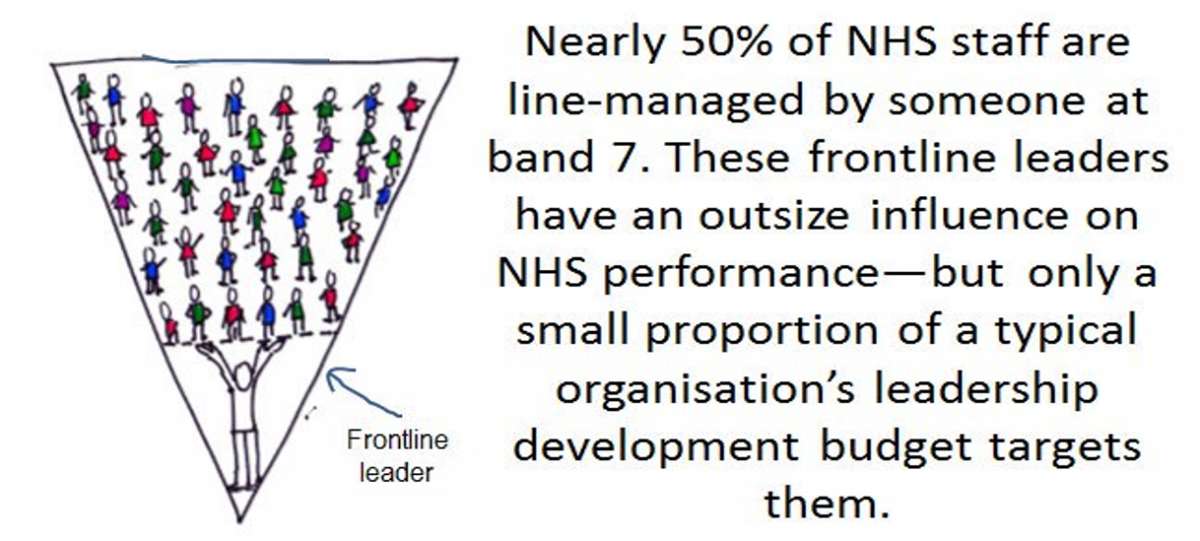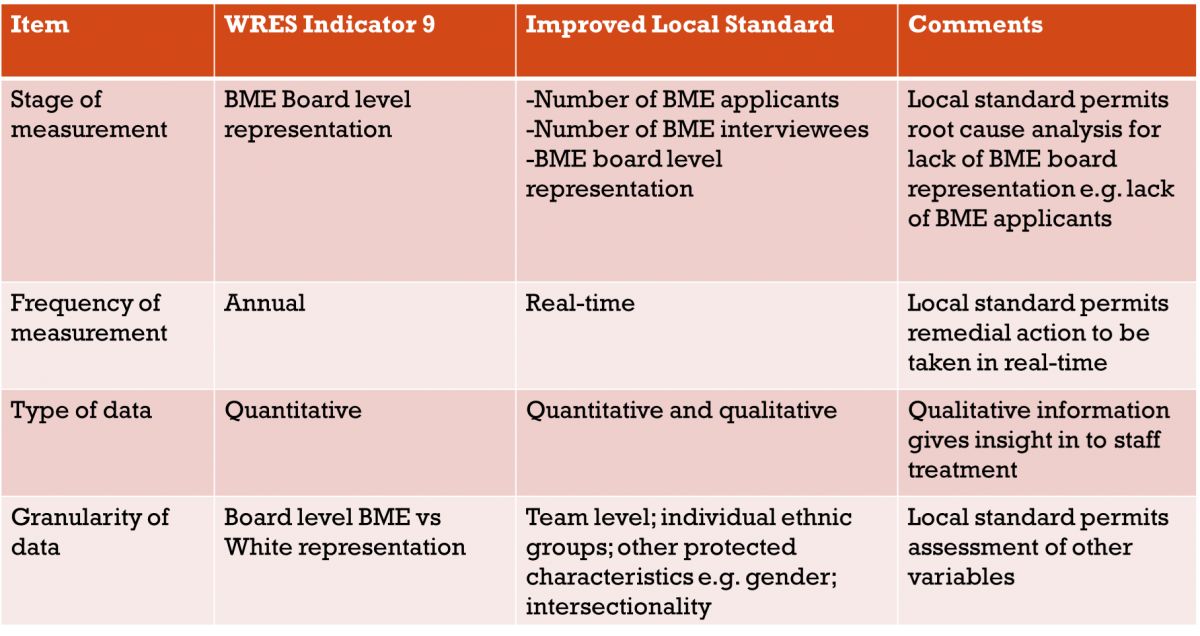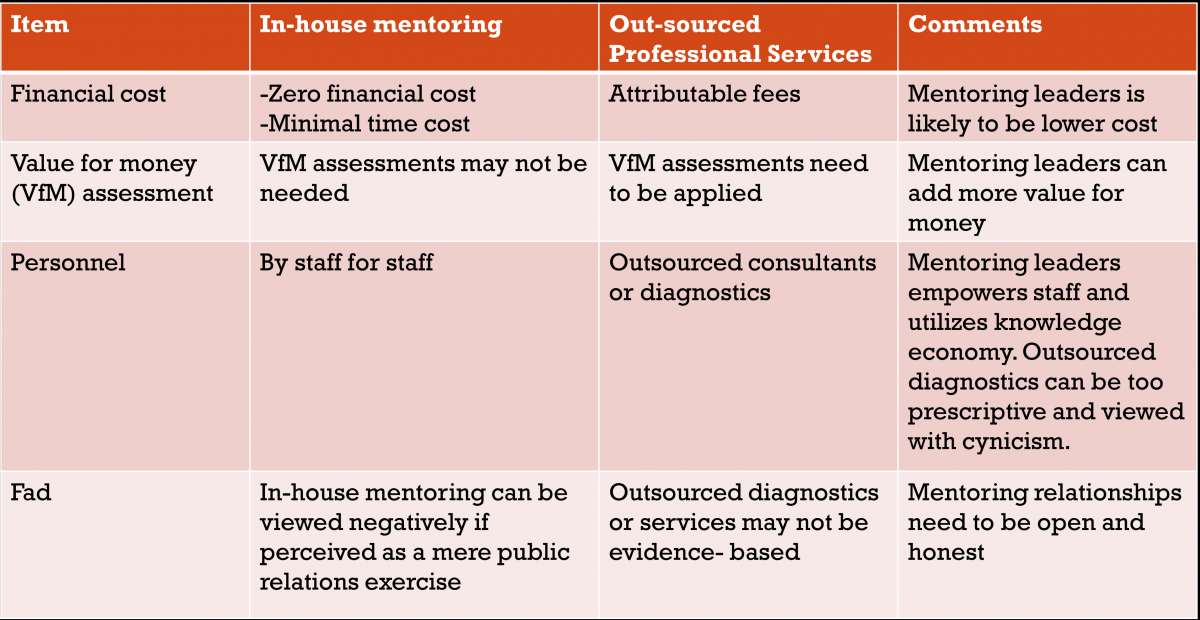
Last month, I had the pleasure of presenting at the 2nd Global Nursing Congress 2021[1] on Mentoring leaders for cultural change: creating a window to the soul of cultural gatekeepers.
In the presentation, I explained my motivation for joining a scheme rolled out in an NHS trust where I previously worked, which paired junior staff (mentors) with senior leaders (mentees), as I had been curious as to the outcomes this unconventional relationship could yield.
The term ‘leaders’ in this context refers to c-suite personnel, such as executive directors, chief executive officers and very senior managers (VSM). As “only 20 to 30 per cent of typical organisational budget” targets frontline leaders in the public sector[2] and given their scale of influence in the NHS (Diagram 1), I would argue for band 7 NHS managers to be included in organisational efforts to support and influence NHS leaders through mentoring schemes.
Diagram 1. Band 7 NHS managers (source unknown)

In addition to presenting my study and findings[3] from mentoring a VSM in my organisation, I recommended an approach for mentoring leaders which I refer to as the ‘community method of mentoring’ (Diagram 2C). Compared to an individual pairing (2A) or a limited number of pairings in silos (2B), the ‘community method’ relies on a critical number of mentor-mentee pairings to allow the formation of separate mentor and mentee communities of practice which communicate. Mentor communities provide accountability, whereas mentee communities thematically analyse feedback from mentors to drive continuous improvement, generate new knowledge and instil consistent approaches to policy implementation across departmental leadership and management. The purpose of this model is to deliver positive and sustainable cultural change.
Diagram 2. Approaches to mentoring
Front-line mentors have an opportunity to design workflows that add value to their organisation, facilitated by adopting a service improvement mind-set. This requires an awareness of national policy and a desire to overcome potential intransigence.
For example, when applying such a mind-set to the Workforce Race Equality Standard 9 (which looks at BME Board level representation[4]), several possible enhancements to this national standard might be envisaged in a local setting (Table 1).
Table 1. Possible enhancements to WRES indicator 9 in a local setting

Finally, I have compared in-house mentoring as a tool for cultural change to out-sourced professional services (Table 2). It is particularly noteworthy that in-house mentoring is not time/labour-intensive and can add considerable value by deploying the knowledge and experiential economy of front-line teams to inform contemporary organisational thought. While outsourced services, diagnostics and cultural audits need to demonstrate their evidence-base and value-for-money.
Table 2. In-house mentoring compared to out-sourced professional services as a tool for cultural change

A mentoring relationship should create a safe space for a leader to suspend hierarchical dominance and listen to their mentor. No area of culture or working practice should be off limits, whether that be equality and diversity, patient-centred care or safety culture. Mentoring programmes can also have a targeted focus on particular “pain points” in organisational culture highlighted, for example, through staff survey results.[3] Such relationships can be nurtured by observing agreed ground-rules and by acting as a critical friend towards mentees by providing positive feedback in public and constructive feedback in private.
Leaders need safe spaces as much as their staff. By providing this constructive space mentors can create a window to the soul of their leaders, who are the gatekeepers of organisational and system culture.
[1] Peers Alley Media. 2nd Global Nursing Congress 2021. ‘Challenges, Innovations and Approaches in Nursing Education, Research and Practices’. Link to programme website: https://globalnursing.peersalleyconferences.com/program
[2] Audier, A., Daniel, C., Lovich, D., Marcil, S., Roediger, A. (2017). BCG.com ‘The hidden potential of frontline leaders in the public sector’. Available at: https://www.bcg.com/publications/2017/social-sector-people-organization-hidden-potential-frontline-leaders-public-sector?utm_source=201709&utm_medium=Email&utm_campaign=Ealert (Accessed: 30 June 2021).
[3] Raza, A., Onyesoh, K. Reverse mentoring for senior NHS leaders: a new type of relationship. Future Healthc J, 2020; 7; (1); 94-96. DOI: 10.7861/fhj.2019-0028.
Available at: https://www.rcpjournals.org/content/futurehosp/7/1/94
[4] Workforce race equality standard data reporting – 2019. Available at: https://www.england.nhs.uk/publication/workforce-race-equality-standard-data-reporting-2019/ (Accessed: 30 June 2021).